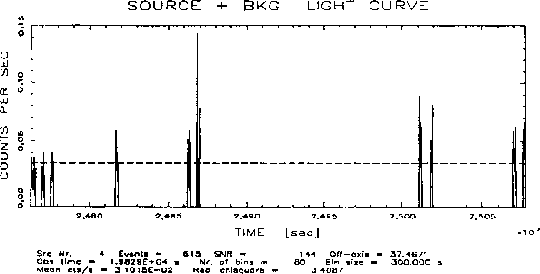
Figure 1.4: Example ROSAT PSPC data stream for a target demonstrating Earth Occultations, etc. This ROSAT PSPC light curve shows a typical ROSAT data sampling pattern, in this case the exposure time on the target was
| About ROSAT |
ROSAT Home Page | ROSAT Images |
|---|

Figure 1.4:
Example ROSAT PSPC data stream for a target demonstrating
Earth Occultations, etc.
This ROSAT PSPC light curve shows a typical ROSAT data
sampling pattern, in this case the exposure time on the target
was ![]() 20,000 seconds.
The large gaps in the data depend on the observation scheduling.
An observation as long as this may be scheduled over a week or two.
The small gaps are due to earth occultations and SAA passages.
Additional gaps can appear in the accepted good time intervals
(GTIs) due to screening on such parameters as aspect error.
20,000 seconds.
The large gaps in the data depend on the observation scheduling.
An observation as long as this may be scheduled over a week or two.
The small gaps are due to earth occultations and SAA passages.
Additional gaps can appear in the accepted good time intervals
(GTIs) due to screening on such parameters as aspect error.
ROSAT was placed into a circular low Earth orbit with an initial
altitude of 580 km.
As seen from the satellite, the Earth subtends a core of (half)
opening angle ![]() , most targets are therefore be occulted
for part of the orbit and observations are broken into smaller
segments which are interleaved with observations of other targets.
Hence, the resulting data stream for a particular target will
in general show large data gaps, as illustrated in
Figure 1.4).
, most targets are therefore be occulted
for part of the orbit and observations are broken into smaller
segments which are interleaved with observations of other targets.
Hence, the resulting data stream for a particular target will
in general show large data gaps, as illustrated in
Figure 1.4).
No Earth occultation occurs for targets in directions perpendicular to the instantaneous orbit plane (which changes due to precession), they are located in the so-called continuous viewing zones. Attempts are made to schedule targets in continuous viewing zones whenever feasible since such targets can be observed with essentially no loss in viewing time other than that due to the passage of ROSAT through the radiation belts and SAA.